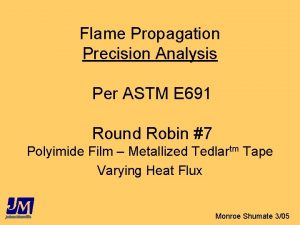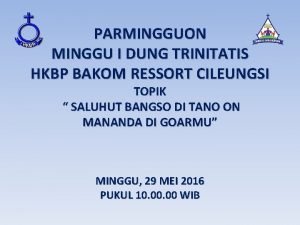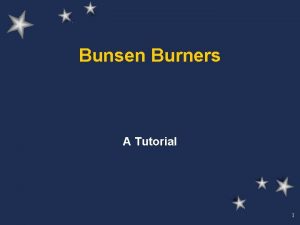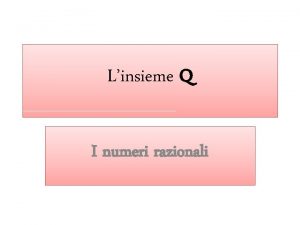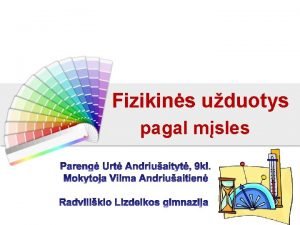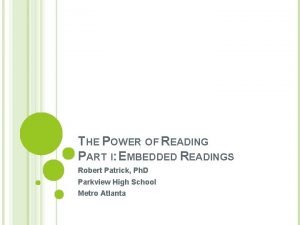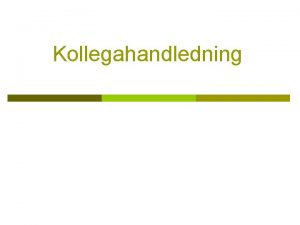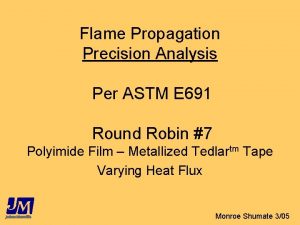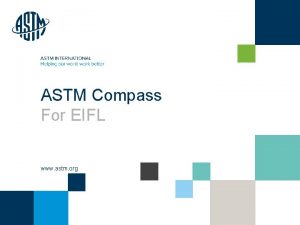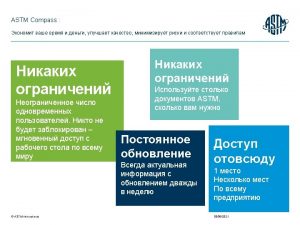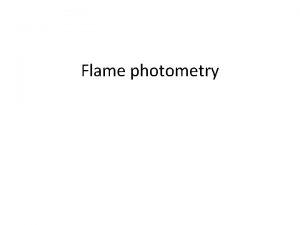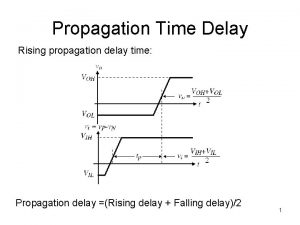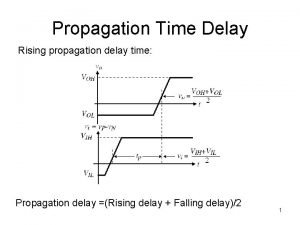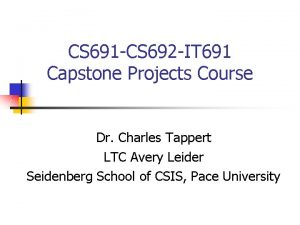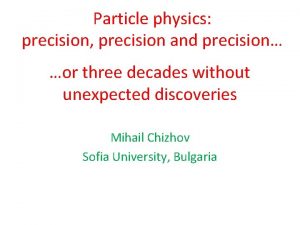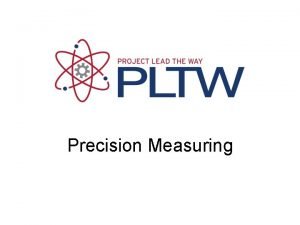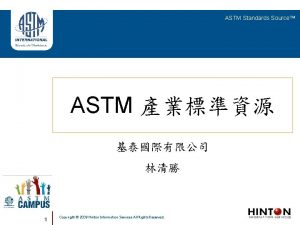Flame Propagation Precision Analysis Per ASTM E 691



















- Slides: 19

Flame Propagation Precision Analysis Per ASTM E 691 Round Robin #7 Polyimide Film – Metallized Tedlartm Tape Varying Heat Flux Monroe Shumate 3/05

ASTM E 691 Precision Analysis Practice for conducting an inter-laboratory test program to determine precision of a test method Practice has been in use for over 25 years

Purpose of an Inter-laboratory Study • Primary – Provide information to prepare precision statement on test method • Secondary- Provide suggestions where to look for improvements to test method

What is precision ? Goal Good Accuracy Good Precision Poor Accuracy Good Precision Good Accuracy Poor Precision Poor Accuracy Poor Precision

So what’s measured and reported? • • • Xbar - Cell Average SX - Standard Deviation (Stdev) cell averages Sr – Repeatability Stdev with-in lab variation SR- Reproducibility Stdev between lab variation r - Repeatability limit (95% confidence = 2. 8*Sr) R – Reproducibility limit (95% confidence = 2. 8*SR)

What does this data show? • • X bar shows average value for this sample/test Sx shows how much the values will vary Sr shows within lab variation as compared to other labs SR shows between lab variation • r - Within lab max. variation or noise – should be 1/4 of the spec limit • R – Between labs max. variation or noise – should be 1/4 of the spec limit

Test Data Round Robin 7 Sample Description & Test Setup • • Polyimide Facing Metallized Tedlar Tape Fiber Glass AA class – 0. 34 pcf Test at 3 heat flux settings

Lab Participation • 10 Labs • 5 samples/lab

Equipment & Setup • Electric and Gas Radiant panels • Set up according to FAR Standard with exception to heat flux • Set up performed by each lab

Reporting Results • Record heat flux, room temperature, relative humidity, controller temperature settings • Report – Flame Propagation – After Flame

ASTM Analysis • Input raw data from round robin • Determine average, deviation, and standard deviation for the following: – For each lab – For all labs combined – Compare individual labs to all labs

Initial Test Results One Set of Raw Data is s y l na a n o isi c e r p m r o f er p s t e ta l da s i th g sin U a b c d g h i j

Initial test results One set of data Results heat flux setting 1. 0 Btu/Sqft Sec. After Flame X bar Sx S r SR r R 2. 1 3. 4 7. 6 17. 6 21. 2 21. 3 Spec Limit – 3 sec max. t s e h So o d w o H k? o o l s i

Initial test results One set of data Results heat flux setting 1. 0 Btu/Sqft Sec. After Flame X bar Sx S r SR r R 2. 1 3. 4 7. 6 17. 6 21. 2 21. 3 ? k o ) e g a r e Spec Limit – 3 sec max. v A ( r Is a b X

Initial test results One set of data Results heat flux setting 1. 0 Btu/Sqft Sec. After Flame X bar Sx S r SR r R 2. 1 3. 4 7. 6 17. 6 21. 2 21. 3 u o y on? n e ati h r w vari a b or X s Sx i w r Ho side n co Spec Limit – 3 sec max.

Initial test results One set of data Results heat flux setting 1. 0 Btu/Sqft Sec. After Flame X bar Sx S r SR r R 2. 1 3. 4 7. 6 17. 6 21. 2 21. 3 es o d w o h Spec Limit – 3 sec max. n o i ? t R ? s t i r e o m i qu o r l e c t t e a e p s im par t l e h u om t e f o th it c r ¼ o lim f R w Is No spec the

Precision analysis – All data Heat flux settings Btu/sqft sec X bar Sx S r SR r R After Flame (spec 3 sec. ) 1 2. 1 3. 4 7. 6 21. 2 21. 3 9. 0 3. 0 8. 4 12. 5 23. 5 35. 1 1. 5 13. 2 10. 3 14. 6 16. 6 40. 9 46. 6 Flame Propagation (spec 2”) 1 1. 4 0. 9 1. 3 1. 5 3. 6 4. 1 1. 3 3. 8 3. 0 2. 3 3. 7 6. 6 10. 3 1. 5 4. 4 3. 3 2. 6 4. 1 7. 4 11. 4 Remember R should be ¼ of spec

Conclusion • Test method is not precise for the type of sample tested (Need to analyze other types of samples) • Both within and between lab variation needs to be addressed – this points to both the equipment and operator

Recommendation • Continue FAA lab inspection process to refine equipment setups for each lab – then repeat round robin • Conduct precision analysis for other types of samples • Conduct FMEA – failure mode effect analysis – to list & prioritize possible areas for evaluation and improvement • Use data from FMEA to conduct ruggedness test (ASTM E 1169) or DOE Optimize equipment/operator specs Monroe Shumate 3/05
 Astm e 691
Astm e 691 Marende 691
Marende 691 Encs 691
Encs 691 Bunsen burner parts
Bunsen burner parts Linear measurement equipment
Linear measurement equipment Semi precision attachment
Semi precision attachment Bcd gösterimi
Bcd gösterimi Bayonet charge
Bayonet charge Approssimazione per difetto e per eccesso
Approssimazione per difetto e per eccesso Coop per te
Coop per te Cantico dei cantici il mio diletto
Cantico dei cantici il mio diletto Kruta ir kruta braska ir braska
Kruta ir kruta braska ir braska 186 282 miles per second into meters per second
186 282 miles per second into meters per second 60 seconds is a minute
60 seconds is a minute 24 km/jam=...dam/menit
24 km/jam=...dam/menit Per stirpes v per capita
Per stirpes v per capita Multas per gentes et multa per aequora vectus
Multas per gentes et multa per aequora vectus Longum iter est
Longum iter est Per capita vs per stirpes
Per capita vs per stirpes Multās per gentēs et multa per aequora vectus
Multās per gentēs et multa per aequora vectus
